喷雾降温技术适用性及热环境研究
VIP免费
摘 要
2010 年世界博览会即将在上海举行,世博期间正是炎热的夏季,如何使本次
世博会获得舒适和安全的参观环境,喷雾降温技术凭借其降温效果、景观效果以
及节能作用,将成为世博会期间重要的室外降温方式之一。喷雾降温技术在上海
地区的降温效果是否良好,是否能有效改善室外环境等问题将成为本文的主要研
究内容。
本文利用《中国建筑热环境分析专用气象数据集》和美国 ENERGYPLUS 的
气象参数,针对喷雾降温效果,对包括上海在内的全国典型地区进行了气象参数
分析。以日本喷雾降温效果实验结果为依据,分析结果显示,上海地区在世博开
馆期间,8.79~22.48%的时刻喷雾降温效果显现,当上海地区 t>30℃时,有 66%
的时间应用喷雾降温技术有效;广东地区由于气候炎热,可以使用喷雾降温技术
的比例能够达到 40%;对于西南和西北地区,温度相对较低,使用喷雾技术时间
的比例为 10%左右。
本文提出了喷雾降温潜力的概念,利用此概念分析全国各地喷雾降温潜力。
分析结果显示,上海地区和广州地区理论喷雾降温潜力有 4~11℃,西北地区由于
气候干燥,降温潜力可达到 15℃左右,但由于需要喷雾降温的时间并不多,户外
喷雾降温技术应用需求并不大。鉴于西北地区干燥凉爽的气候环境,可考虑结合
喷雾降温技术与通风技术运用于改善室内环境,既可达到降温效果,又可改善室
内湿度环境。
论文进行了两类喷雾降温试验,以分析喷雾降温对环境的温降贡献。两类试
验都在上海进行,其中之一是梦清园景观喷雾降温效果试验;另一类是华山路高
压喷雾降温效果试验。梦清园景观喷雾试验结果显示,远离喷雾区的测点温降在
1~3℃,离喷雾区较近的测点温降最高可以达到 4℃。华山路高压喷雾试验结果显
示在较为干燥炎热的气象条件下,喷雾可以使环境降低 4~7℃,而在较为潮湿的
气象条件下,喷雾可以使环境降低 2~4℃。处于喷雾中心区测点的温降效果要好
于远离喷雾区的测点。利用 9月26 号华山路试验数据计算喷雾效率,结果显示在
喷雾中心区域的喷雾效率为 80%,远离喷雾区测点喷雾效率为 20%~40%。试验
结果表明,上海地区喷雾降温具有一定的降温效果。
利用 WBGT 评价指标对喷雾环境进行综合评价,并分析了太阳辐射对喷雾降
温环境的影响。分析结果显示,喷雾降温技术可以使喷雾区 WBGT 温降达到 1~
4℃,而太阳总辐射每升高 100W/m2,WBGT 值就会升高 0.2~0.3℃。利用必须出
汗率 SREQ 评价指标对喷雾环境进行了综合评价,并分析了风速和衣着对人体舒
适度的影响。分析结果显示,喷雾降温技术可以使喷雾区 SREQ 值降低 50 W/m2。
本文研究成果将有助于人们对喷雾降温技术有更进一步的了解,为挖掘喷雾
降温的降温潜力提供理论和实验依据。随着全球气候逐渐变暖,喷雾降温技术在
改善室外人员活动区的应用空间将会越来越大,随着研究的深入,喷雾降温技术
在特定地区可望成为室外降温的主要方式。
关键词: 喷雾降温 蒸发冷却 气象参数 室外热环境
ABSTRACT
Shanghai World Expo will be held in 2010. During the World Expo, the weather is
the hot summer compare to the aim of the World Expo is providing comfort and
security of environment for visitors. So with its outstanding energy efficiency and
cooling effect, spray- cooling technology will become one important outdoor cooling
way during World Expo. And the main research contents of this article will show the
effect of spray- cooling technology’ is good or not in the Shanghai region and whether it
can effectively improve the outdoor environment.
This paper used the data in Analysis of thermal environment of Chinese
architecture-specific meteorological data sets’ and ‘the United States ENERGYPLUS
meteorological parameters’ and analysis the meteorological parameters in Shanghai and
other typical areas in China.
Based on the results of analysis of meteorological parameters, 8.79 ~ 22.48% of
the time has effect of spray- cooling technology during the opening period of the World
Expo in Shanghai. And you can use spray- cooling technology in 40% times because of
the hot weather. And the ratio of the Southwest and the Northwest is 10% due to the
relatively temperature. For relatively dry north-west, the use of spray cooling
technology is not the role outside because of its relatively cool climate. But there has
also a significant cooling effect. So we can improve the indoor environment combine
spray cooling technology and ventilation technology. Then, we can achieve the cooling
effect and also improve indoor humidity.
And this paper delimits the concept of the potential of spray- cooling technology
and uses the conceptual analysis to the potential of spray- cooling technology in all
parts of the country. The result shows the potential of spray cooling in Shanghai and
Guangzhou is 4 ~ 11 ℃. And the potential of spray cooling in the Northwest reaches to
15 ℃due to the dry climate. However the role of spray cooling technology is not too
great outside because the need of spray cooling is a little.
The paper analysis the effect of the spray systems contribute to the temperature.
There are two major tests: 1. Meng Qing Landscape spray test; 2. Huashan Road,
high-pressure spray test. Tests are all carried out in Shanghai and can reflect the effect
of the spray cooling in Shanghai. Meng Qing Landscape spray test shows that the
measuring point which is far away from the spray systems can be drop 1 ~ 3 ℃and the
measuring point close to the spray zone can be drop 4 ℃.Huashan Road high-pressure
spray test results show that the environment can reduce spray 4 ~ 7 ℃in more dry and
hot weather conditions. And in more humid weather conditions, the spray can reduce
the environmental 2 ~ 4 ℃.
The two tests above show that the effect of the spray cooling in the central area of
the measuring point is better than the further one. The data in September 26th on
Huashan Road shows that the efficiency of the central region is 80% compare to the
20% ~ 40% which is away from the spray zone.
Use the WBGT index to evaluate the environment and obtain the contribution of
spray-cooling technology and solar radiation on the environment. The results show that
spray cooling technology can drop 1 ~ 4 ℃WBGT temperature in the spray areas. With
the increase in global solar radiation each 100W/m2, WBGT value will increase 0.2 ~
0.3 ℃. This paper also uses SREQ to evaluate the spray environment and analyze the
wind speed and clothing comfort on the impact of the human body. The result shows
that spray-cooling technology can reduce SREQ 50 W/m2.
This paper can help people has a further understanding of spray cooling technology
and give full play to the role of spray cooling technology. With the gradual warming of
global climate, spray-cooling technology can be applied to the outdoor areas much more
widely. And with in-depth study, spray cooling technology is expected to become the
main way to drop temperature outdoor.
Key words: spray-cooling technology; Evaporative cooling;
Meteorological parameters; Outdoor thermal environment
目 录
摘 要 .........................................................................................................................
ABSTRACT ................................................................................................................
第一章 绪论 .............................................................................................................1
§1.1 课题的来源 ..............................................................................................1
§1.2 热环境评价指标研究概况 ......................................................................2
§1.3 喷雾降温原理及国内外研究概况 ..........................................................4
§1.4 喷雾降温技术在国内外应用概况 ..........................................................6
§1.5 课题研究方法、目标及意义 ..................................................................9
§1.5.1 研究方法 ........................................................................................ 9
§1.5.2 研究目标 ........................................................................................ 9
§1.5.3 研究意义 ........................................................................................ 9
§1.6 本文的主要工作 ......................................................................................9
第二章 理论基础研究及喷雾降温应用潜力研究 ...............................................11
§2.1 理论基础 ................................................................................................ 11
§2.1.1 水微粒蒸发机理研究 .................................................................. 11
§2.1.2 蒸发冷却降温潜力 ...................................................................... 13
§2.1.3 喷雾效率 ...................................................................................... 15
§2.2 上海气象条件与世界三大城市气象条件的比较 ................................15
§2.3 中国典型地区气象参数比较分析 ........................................................16
§2.4 各地气象条件针对喷雾降温详细分析 ................................................19
§2.5 全国各地喷雾降温潜力分析 ................................................................27
第三章 喷雾降温效果试验研究 ...........................................................................29
§3.1 高压喷雾降温试验系统原理 ................................................................29
§3.2 喷雾水微粒粒径测试结果 ....................................................................30
§3.3 试验概况 ................................................................................................32
§3.3.1 试验条件 ...................................................................................... 32
§3.3.2 试验仪器与数据处理 .................................................................. 34
§3.4 试验数据及结果分析 ............................................................................34
§3.4.1 梦清园景观喷雾试验数据及结果分析 ...................................... 34
§3.4.2 华山路高压喷雾试验数据及结果分析 ...................................... 39
§3.5 潜力验证及喷雾效率 ............................................................................44
第四章 室外喷雾降温热环境评价分析研究 .......................................................47
§4.1 室外热环境评价指标 .............................................................................47
§4.2 室外过热环境喷雾前后 WBGT 指标分析 .......................................... 47
§4.2.1 WBGT 的应用及发展简述 .......................................................... 47
§4.2.2 温度等焓下降对降低室外环境 WBGT 的贡献 ........................ 49
§4.2.3 WBGT 极限曲线分析气象参数 .................................................. 51
§4.2.4 喷雾前后 WBGT 指标评价分析 ................................................ 53
§4.3 喷雾前后室外热环境必须出汗率 SREQ 评价分析 ............................56
§4.3.1 必须出汗率 SREQ 指标简述及计算方法 ..................................56
§4.3.2 利用必须出汗率 SREQ 指标评价喷雾环境 ..............................58
第五章 结论与展望 ...............................................................................................61
§5.1 结论 ........................................................................................................61
§5.2 展望 ........................................................................................................62
参考文献 .................................................................................................................63
在读期间公开发表的论文和承担科研项目及取得成果 .....................................66
致 谢 .....................................................................................................................67
相关推荐
-
公务员思想政治教育研究VIP免费
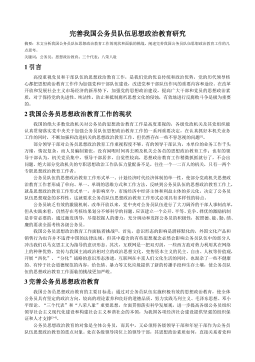
 2024-10-15 30
2024-10-15 30 -
在线社会网络中用户行为的实证分析与机制建模研究VIP免费
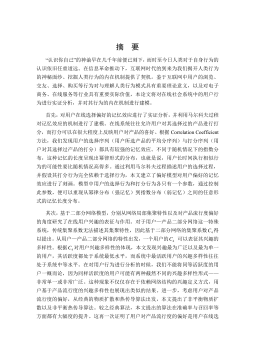
 2025-01-09 6
2025-01-09 6 -
智能优化方法对神经网络的改进及应用研究VIP免费
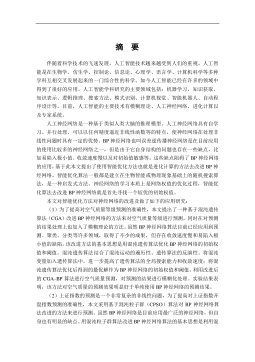
 2025-01-09 6
2025-01-09 6 -
鲜切哈密瓜保鲜技术研究VIP免费

 2025-01-09 8
2025-01-09 8 -
小城镇道路网级配方法及应用研究VIP免费
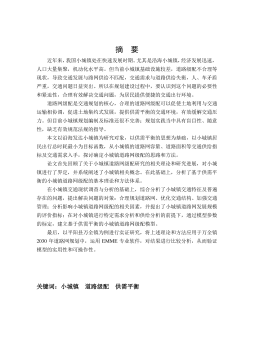
 2025-01-09 6
2025-01-09 6 -
医学信息集成测试系统的研究与实现VIP免费
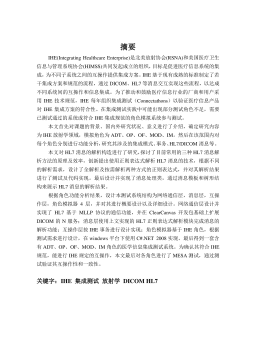
 2025-01-09 7
2025-01-09 7 -
余热驱动氨水吸收式制冷系统的理论及实验研究VIP免费
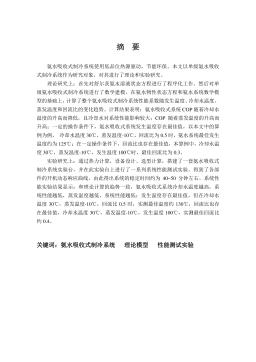
 2025-01-09 7
2025-01-09 7 -
喷雾降温技术适用性及热环境研究VIP免费
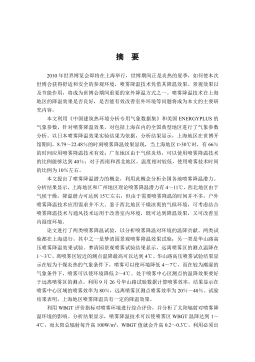
 2025-01-09 8
2025-01-09 8 -
收缩—扩张喷嘴的气泡雾化数值模拟VIP免费
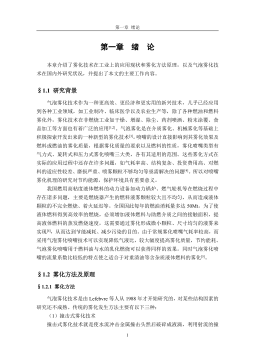
 2025-01-09 8
2025-01-09 8 -
支持供应链的工作流系统结构及其计划与调度的研究与应用VIP免费
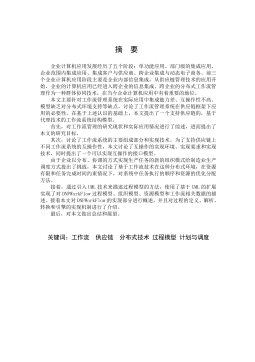
 2025-01-09 11
2025-01-09 11
作者:赵德峰
分类:高等教育资料
价格:15积分
属性:71 页
大小:8.81MB
格式:PDF
时间:2025-01-09
作者详情
相关内容
-

医学信息集成测试系统的研究与实现
分类:高等教育资料
时间:2025-01-09
标签:无
格式:PDF
价格:15 积分
-

余热驱动氨水吸收式制冷系统的理论及实验研究
分类:高等教育资料
时间:2025-01-09
标签:无
格式:PDF
价格:15 积分
-

喷雾降温技术适用性及热环境研究
分类:高等教育资料
时间:2025-01-09
标签:无
格式:PDF
价格:15 积分
-

收缩—扩张喷嘴的气泡雾化数值模拟
分类:高等教育资料
时间:2025-01-09
标签:无
格式:PDF
价格:15 积分
-

支持供应链的工作流系统结构及其计划与调度的研究与应用
分类:高等教育资料
时间:2025-01-09
标签:无
格式:PDF
价格:15 积分






